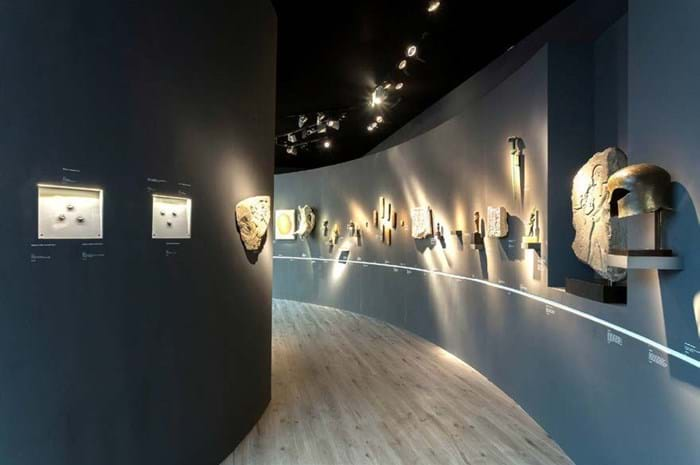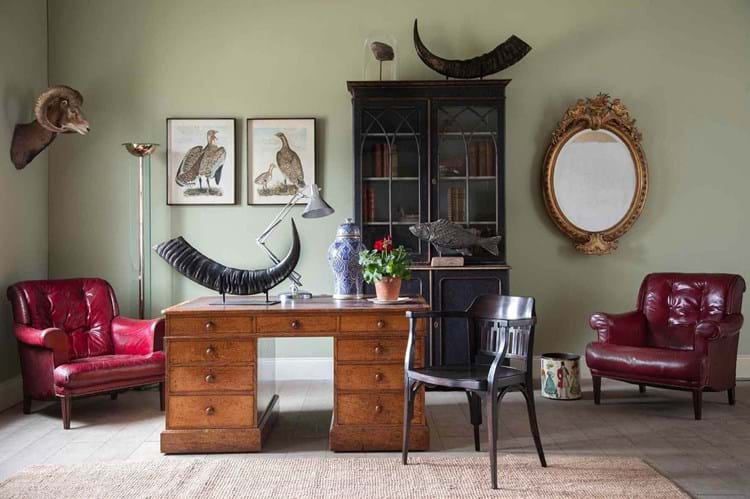
‘A Timeless Study of Curiosity’ is included in Lorfords’ online collection of interior design ideas. The Gloucestershire decorative antiques centre features in the picture here a mammoth tooth, red coral specimen and pair of mounted horns alongside a 19th century mirror, 20th century Chinese ginger jar and a modernist floorlamp.
As fossil hunters in the US complete their summer digs, dealers in London prepare for their autumn fairs season.
These two groups may not have much contact, but as a craze for natural history items grows, they have never been so closely linked.
Buyers are embracing new ways of displaying rocks, minerals and fossils in their homes, prizing them as key pieces in interior design. Key pieces can be bought from specialist dealers. However, the world of natural history is gradually spilling over into the traditional art and antiques trade.

Carol Tresor brings this Cretaceous period Excalibur formation central amethyst epimorph after calcite to the LAPADA fair where it is offered for £75,000.
Carolina Valdés Vignoli of Carol Tresor, a specialist in Uruguayan amethysts and shipwreck pottery, is among the exhibitors at the LAPADA Berkeley Fair Square (from September 27-October 1), returning after the last edition in 2019.
“It was risky for me to try that fair because my pieces are very different from what you normally find at art fairs, but everyone was very curious and attracted by something different,” Vignoli tells ATG.
She works with a mix of collectors and museums as well as architects and designers, offering “bespoke mineral formations to be sourced with their end location in mind, be it a home office or a gallery”.
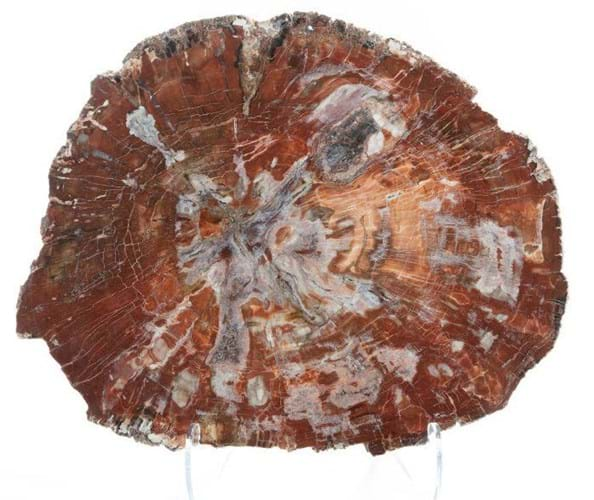
William Cook Antiques offers this petrified wood slice with stand for £785. On the website it is described as “a really decorative and interesting piece that will work equally well in an antique or contemporary interior”. williamcookantiques.com
Interest in natural history items is not new but it is changing. Over the past 10 years or so the buyer base has widened rapidly. Scientific artefacts are valued more than ever for their sculptural and decorative qualities, and in the home the pieces in question are often larger or punchier but fewer for more impact.
Justin Evershed-Martin, a specialist in decorative arts from the past 200 years, found a buyer for a gogotte offered for a five-figure sum at this summer’s Treasure House Fair.
“You can have one piece and give it a bit of reverence and it becomes cool,” he says.
These days, an item that would once have been swept up in the process of “didactic Victorian collecting” where it would become one piece in an overstuffed private museum is now decorative fodder “for a Notting Hill loft”.
The trend reflects the rise of the cross-collecting, interiors-focused buyer who is as likely to position an ammonite alongside a piece of contemporary art as another fossil.
At the same time it reflects a much older collecting impulse.
The first formal European collections, compiled by nobles of the 16th century, also prized a balance between naturalia (items from nature), mirabila (unusual natural phenomena) and artificialia (human-made wonders).
These were often gathered and displayed in a kunstkammer or cabinet of curiosities.
Freya Simms, CEO of LAPADA, says: “Collecting larger pieces makes the entire home a life-size kunstkammer where a highly individual style can be developed through large pieces of natural history side by side with fine art, sculpture and design.”
Started with Sue
It all started with the dinosaurs. In the nearly prehistoric days of 1997 Sotheby’s sold Sue, a Tyrannosaurus Rex skeleton, for $7.6m, then a record hammer price for a dinosaur fossil.
Thanks to the Jurassic Park film franchise and possibly to the rise of tech billionaires looking for new ways to spend their money and decorate their ultra-modern homes, the natural history collecting trend gained strength in the 2000s.
Actors also got involved- Leonardo DiCaprio became a collector, and Russell Crowe reportedly bought a mosasaur skull off him for around $30,000 during a party (selling it on for Aus$65,000 in his divorce auction in 2018).
Google added a bronze replica of a T-Rex skeleton to its main campus in the early 2000s, and in 2017 the CEO of French waterproofing company Soprema bid more than €400,000 at Aguttes for a mammoth skeleton to match his firm’s branding.
Then, in October 2020, Christie’s auctioned another T-Rex for $32m - a huge result for an example less complete than the famous Sue.
“Since then, more dealers and auction houses have begun to enter the market,” says Jethro Sverdloff, director at London dealership ArtAncient. Specialising in antiquities as well as natural history, the dealership started showing at fairs 10 years ago but saw a marked rise in interest around natural history items in 2019 when it staged a show at Frieze Masters tracking 4.5 billion years of earth’s history through objects.
Sverdloff says: “It is this relatively new trend to present aesthetic natural history objects in and among more conventional artworks that is the real drive behind the growth in this market.”
Its recent sales include a smilodon (sabre-tooth cat) skull, which sold to a private collector for a seven-figure sum and is now displayed in a modern home surrounded by contemporary works of art.
This autumn ArtAncient brings a fragment of a late Cretaceous period matrix from the Lance Formation in Wyoming to Frieze Masters (October 11-15). Containing a mix of fossilised remains, the slab features a large, pristine T-Rex tooth.
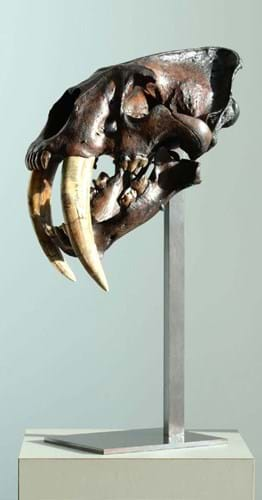
A 12,000-20,000 year old sabre-toothed cat (Smilodon fatalis) skull from La Brea Tar Pits, which ArtAncient sold to a US collector for a six-figure sum.
Tighter regulations
It worth noting that the fortunes of some natural history items have differed from that of minerals and fossils recently.
A representative of the Decorative Antiques and Textiles Fair in Battersea said that taxidermy and mounted butterflies, once common at the event, have been less obvious recently, replaced by items such as antlers, shells, antler furniture, driftwood sculpture, antique coral and the occasional animal skull. Tightening CITES regulations present challenges in these areas.
However, trading in fossils and minerals also comes with its share of restrictions. Of particular importance are export regulations. While many countries such as Canada have strict regulations, in others such as Mongolia and China export is forbidden.
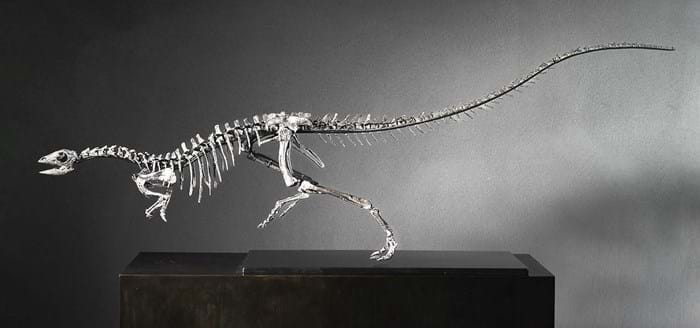
David Aaron offers this nanosaurus skeleton fossil from the late Jurassic period, c.150m years old. It is available for a six-figure sum at this year’s Frieze Masters.
David Aaron, which specialises in natural history items alongside antiquities, made a splash last year when it brought dinosaurs to two different fairs. First was a triceratops skull which it sold at Masterpiece for six figures, then a Jurassic-period Camptosaurus that went for £1m at Frieze Masters.
Salomon Aaron says that the firm’s background in antiquities makes it an ideal trader in fossils. Like ancient art, the sale of prehistoric items can be a lengthy process including “consulting the best experts and methodically approaching all elements to the process from the point of discovery, extraction, assembly, research, study, and presentation”.
This year the firm offers “one of the most complete and spectacular examples” of an “iconic and famous dinosaur” at Frieze Masters, the species as yet unspecified.
Generational fascination
Often beautiful and unusual, fossils and minerals have attractions beyond their place in the headlines.
For one, they bind generations together. Dealer Evershed-Martin is not alone when he recalls starting a specimen stone collection as a child and being inspired to do so by his grandfather. Today, he sees the forms of natural world reflected in furniture and decorative art designed over the past few centuries.
Then there is their intrinsic appeal. When buyers go for natural history items, it is in part “a response to the form itself”, Evershed-Martin says. “There is a real authenticity to the abstraction.”
And - up to a certain level - natural objects can represent better value and less contrived compositions to their contemporary counterparts in abstract art. “The other appeal is the the wonderment that here is a link to prehistory sitting in your hands,” adds Evershed-Martin.
Vignoli agrees. “I reckon people who buy these pieces are driven especially by their curiosity, and the fact that these are natural sculptures formed over millions of years ago,” she says. “Everybody is totally hypnotised by these pieces and the fact that they are natural.”
Inlaid table
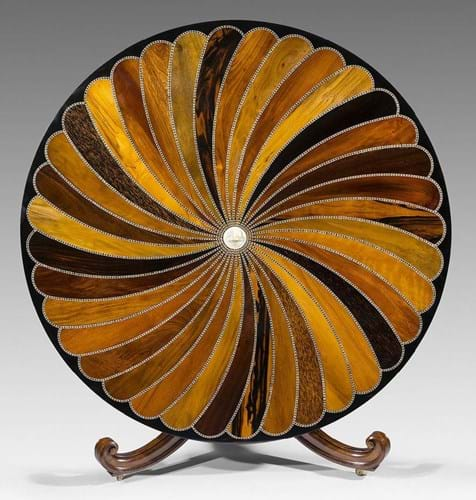
A c.1850 centre table from the Galle district of Sri Lanka, offered by Lennox Cato Antiques for a price in the region of £75,000 at the LAPADA Berkeley Square Fair.
One way items from the natural world have been showcased historically – other than in collections – is through specimen cabinets or tables.
These are comprised of multiple examples of wood or marble, usually shaped into a repeating pattern as in this c.1850 centre table from the Galle district of Sri Lanka. It is inlaid with indigenous woods and ivory with an inlaid ivory disc at the centre. It is registered with Defra and is offered by Lennox Cato Antiques for a price in the region of £75,000 at the LAPADA Berkeley Square Fair.
lennoxcato.com
Gogottes
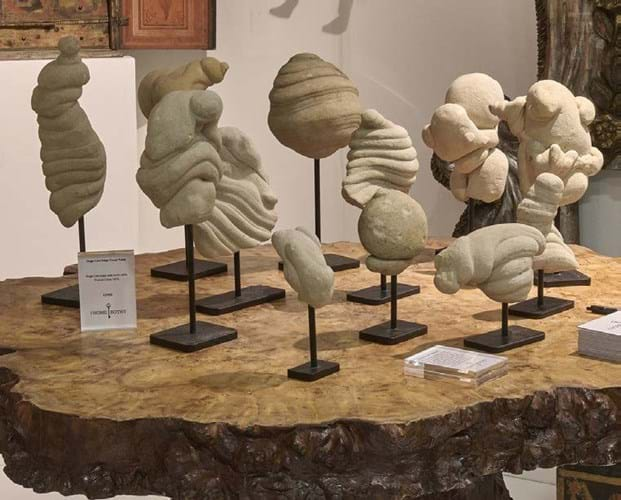
A collection of gogottes, sold for £6800 by The Home Bothy at the Decorative Antiques and Textiles Fair.
As interest in natural history soars, one formation is enjoying particular popularity: gogottes. These quartz crystal and calcium carbonate creations were formed out of sand deposits in northern France during the Oligocene Period and have a distinctive organic shape.
Collected by both Louis XIV at Versailles and the Modern British sculptor Henry Moore, they were named by French geologist Claude Guillemin (1923-94) who was inspired by characters from the children’s book Babar.
Recently they have been in the spotlight again. Asian art specialist Eskenazi has held two exhibitions on the subject in 2018 and 2022, ArtAncient devoted its final Masterpiece stand to the formations selling eight examples at prices from £4500-150,000, and folk art dealer The Home Bothy sold a collection of small examples for £6800 at the January edition of the Decorative Antiques and Textiles Fair in Battersea.


